ELEMENTS OF AN AUDIOVISUAL INSTALLATION
Space. Time. Experience.
Neuroscience:
What do we mean when we talk about “audiovisual installation”?
Defining the ontology of such a practice is no simple undertaking.
According to Rosalind Krauss, the advent of the Sony Portapak in 1964 and the consequent diffusion of the video medium in the artistic sphere caused a separation between “technical media,” those media utilized according to their protocols of use, and “expressive media,” that is, those based on the modification of materials, physical substances and discursive actions.
This determined the end of media specificity and the impossibility of categorization of new media products.
In contemporary art practices, thanks in part to the advent of digital, the expressive, technical, and technological freedom defined by video in the 1960s/70s has further expanded. This fosters the formation of mobile disciplinary fields and a multitude of hybrid situations.
The audiovisual installation is perhaps the most complex of these. It does not have its own fixed and defined device, but rather creates it ad hoc. It is not itself a medium, but uses consistently different “mediums”.
Thus, installation is an art form without a clear ontology.
Its definition can be based on three closely interconnected key elements: space, time, and experience.
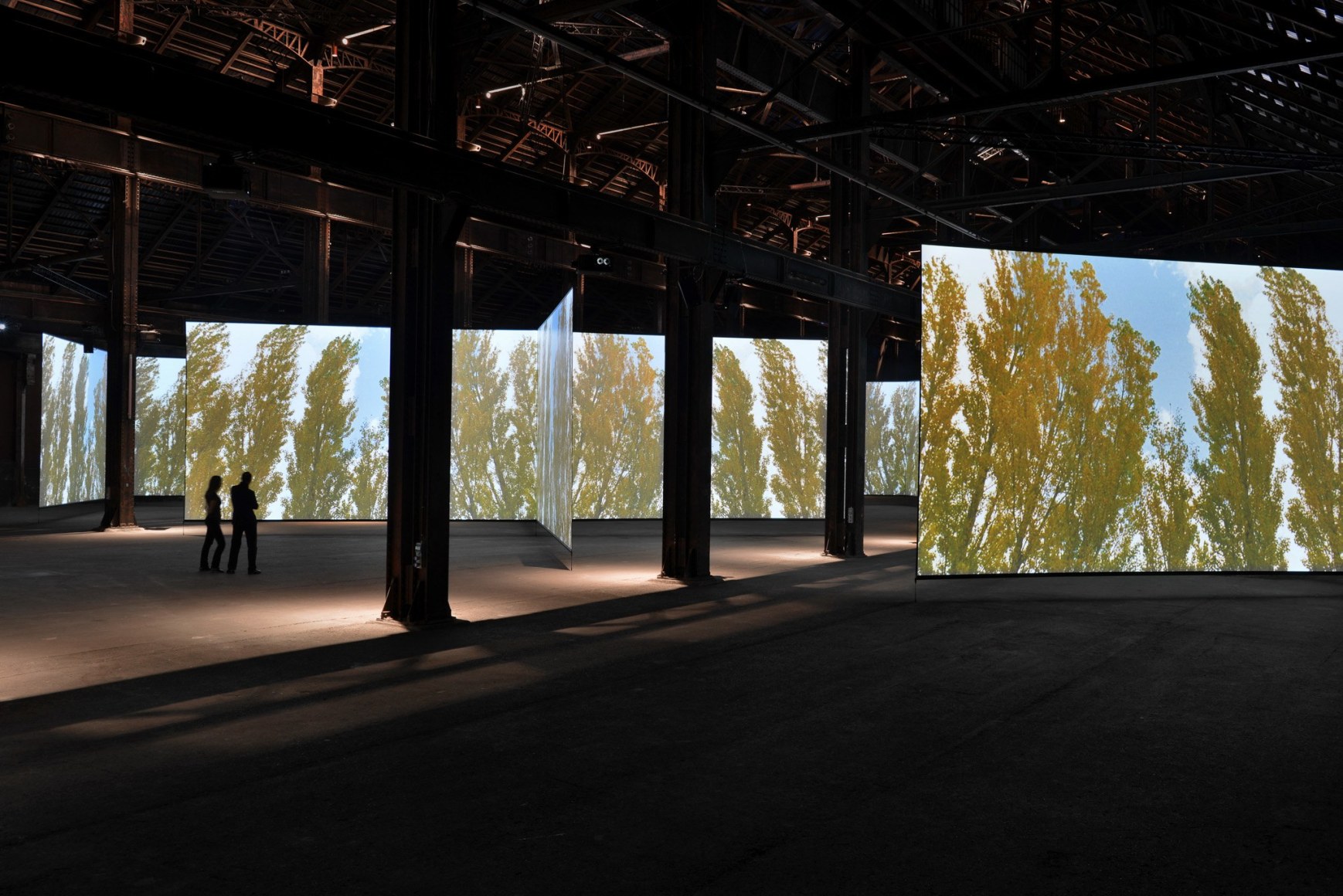
Space
Installation is an exhibition practice of direct evolution from museum practice. The choice and arrangement of particular works in an exhibition space always takes into account the relationships between them. Each work placed within a room is never enclosed in a watertight compartment, but inevitably enters a relationship with those around it.
In the installation, it is precisely the spatial arrangement and the network of relationships between its elements that generate the work.
The semicircular arrangement of screens in Shirin Neshat’s Women Without Men installation creates a cozy, intimate space within which the viewer is invited to enter and move freely. As Miriam de Rosa notes, the installation space symbolically recreates the environment of a garden, a symbolic element of great importance within the film.
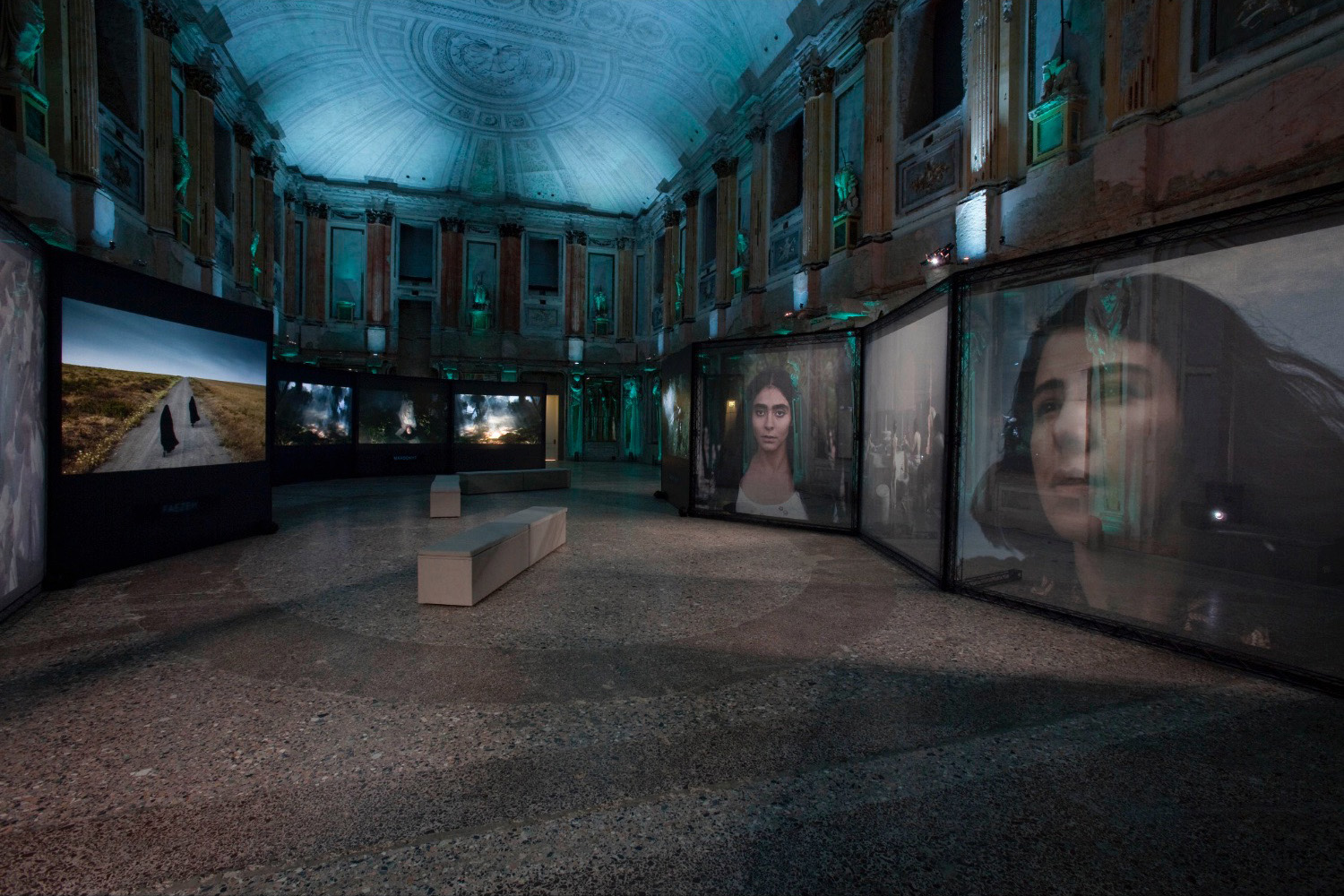
The spatial component is also to be understood as “site”. The very environment in which the work is placed becomes an integral part of it through a constant and continuous dialogue that can also vary according to weather conditions.
Art exhibitions have long since left museums and invaded historic buildings, villas, and castles. They are not environments born or designed to host installations, and if originally there was a tendency to recreate a neutral space, there is now conceivable value in the possibility of leaving the architecture of the building visible by putting it in dialogue with the work.
This situation is particularly relevant in site-specific installations built to relate to a particular place. Exhibition space and work can weave together particularly complex and articulated relational networks that activate continuous processes of mutual reconceptualization.
Shirin Neshat’s choice to install her work inside the Sala delle Cariatidi is based precisely on the historical and symbolic significance of the location and the analogy created with the themes expressed in the work.
The room’s decorative apparatus bears witness to its own history by showing the deep scars caused by the bombing suffered by the city of Milan in 1943. Ten years later Pablo Picasso chose the room to exhibit Guernica, creating a parallelism between the content of the canvas and the exhibition hall, both linked to the horrors of World War II.
What happens in 2011 with Women Without Men is similar. Popular uprisings and armed clashes form the backdrop of the Iranian artist’s work, but more than these kinds of battles, the ones that emerge most strongly are the personal battles fought by the protagonists. Even violent battles that leave bodily or internal marks, which find correlation in those of the caryatids’ bodies highlighted by the lighting.
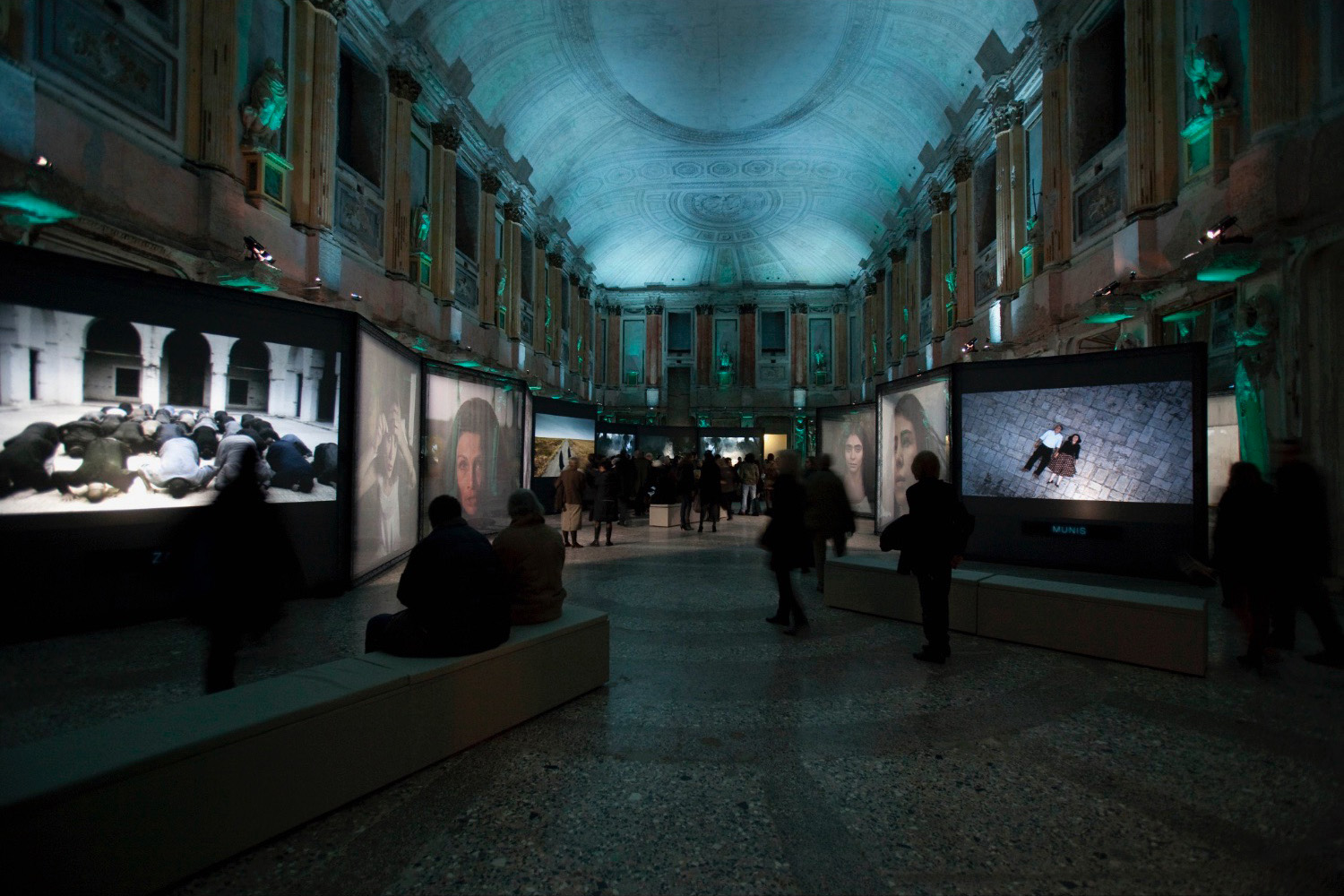
Time
There are audiovisual installations that maintain traditional temporality by implying a beginning and an end, installations in which entry is controlled and timed, others in which the narrative is looped. Whichever form it takes, time is intrinsic to the audiovisual installation.
It is worth dwelling here on multichannel installations. They introduce a real revolution: the spatialization of time.
By allowing different situations to coexist in the same temporal plane, they attempt to approach temporality typical of psychic, dreamlike, or memorial perceptual processes.
Eija-Liisa Ahtila’s installation The House aims to communicate an altered state of mind, far from the common perception of space-time reality. The artist matches the structure of the work to the mental structure of the protagonist so that the viewer experiences the woman’s daily life, rather than simply telling them about it.
The initial sequence seems to flow in a linear fashion; however, as the work progresses the narrative order becomes increasingly chaotic and confusing. Actions follow one another without causal correlation and the sense of disorientation involves the viewer as much as the protagonist.
Already present in the film version of the play, this structure is amplified by spatialization. Frames that in the film were shown one after the other in the installation are projected simultaneously. The narrative structure is a network devoid of any hierarchical organization or spatiotemporal order, a hypertext in which every connection is possible.
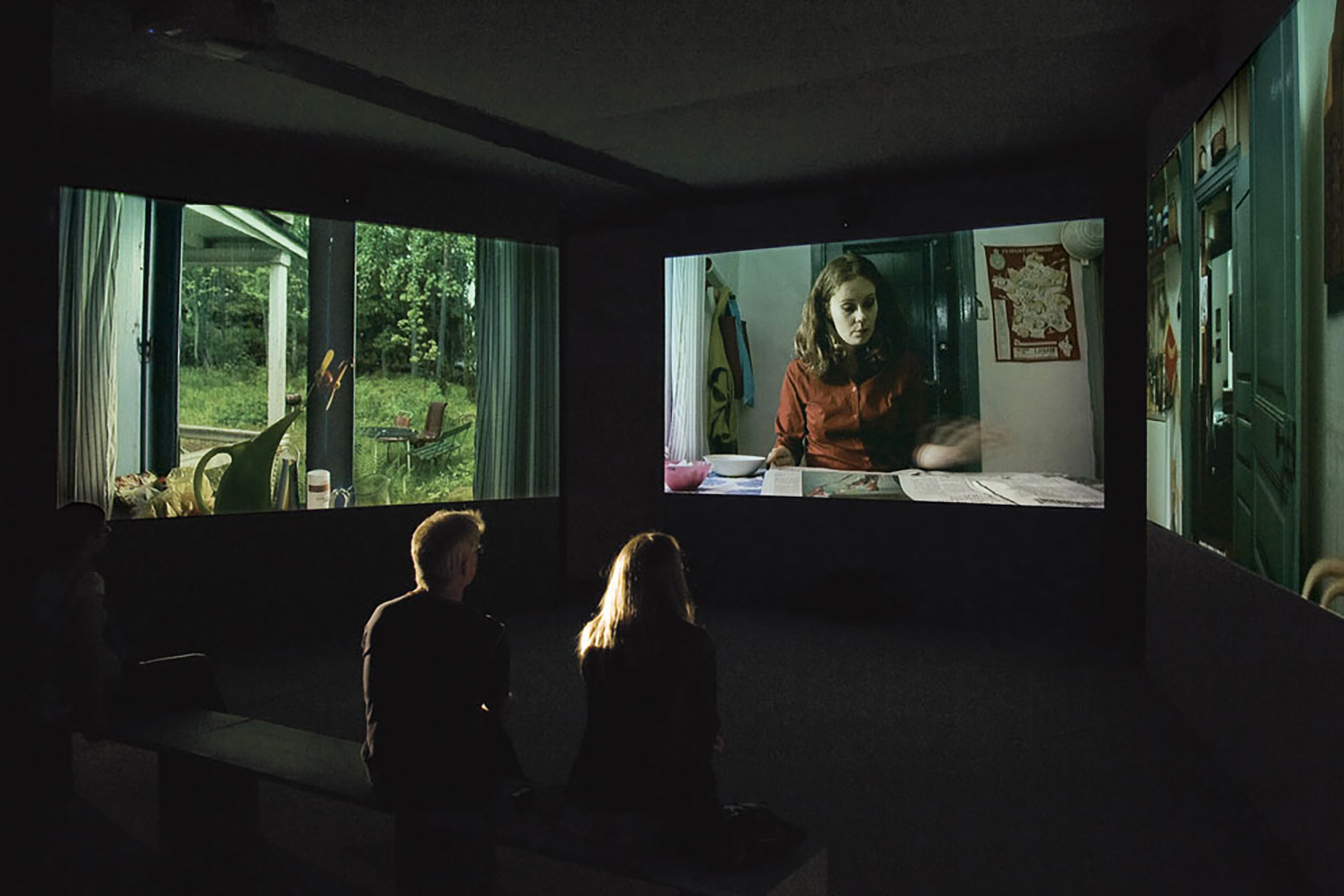
Experience
The spatiotemporal relationships among the works of an exhibition and those of an installation are activated by the third fundamental element of installations: the viewer. It is through his or her movements that the installation actually takes shape, assuming a potentially unique and different configuration for each viewer.
Several scholars have attempted to catalog the spectatorial figures typical of audiovisual installations. Raymond Bellour theorizes the “intermittent spectator” referring to both the motion of the gaze moving from one screen to another and the motion of the body alternating between stasis and movement.
Dominique Païni identifies the flâneur viewer as one who wanders aimlessly seeking aesthetic fulfillment and loss of self. Philippe Dubois speaks of the “walker-narrator,” focusing on the physical action of the viewer. Such action, and the path that follows, are seen by Dubois as performative acts that produce narrative.
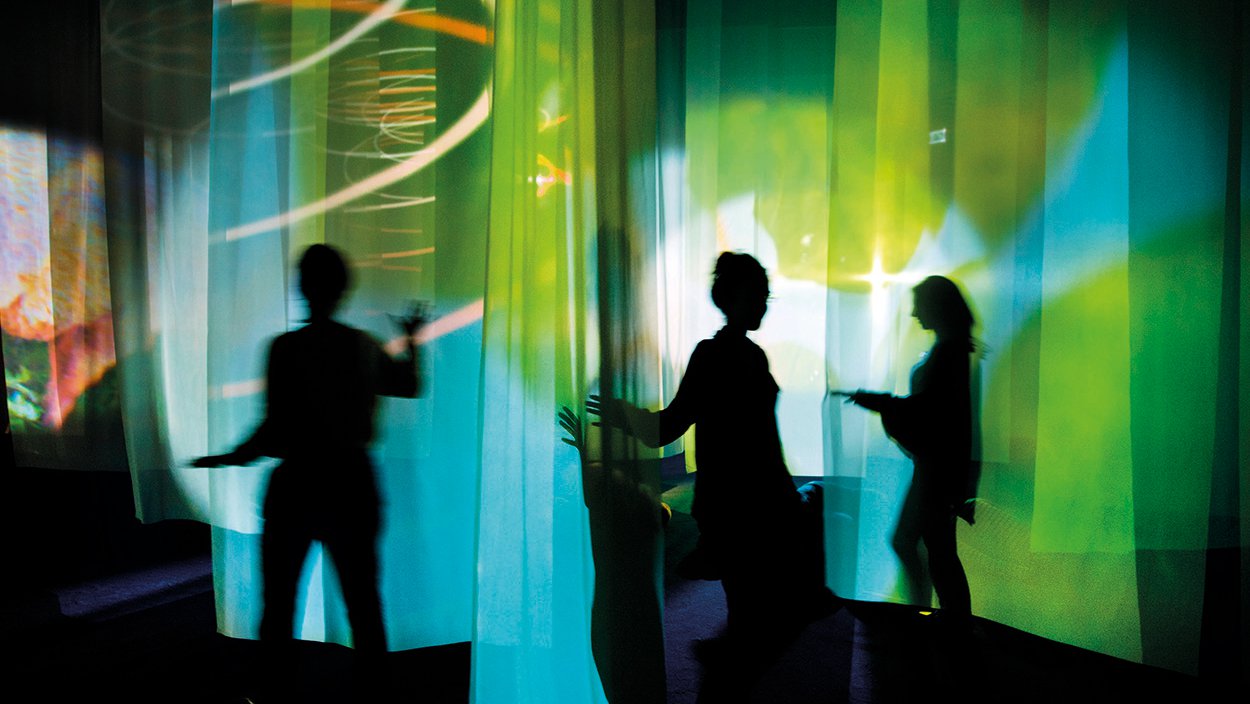
All these definitions meet a viewer who constructs the work individually and subjectively.
An additional level of subjectivity is determined by one’s own memories and cultural knowledge. The viewer’s background can expand the “montage” activity to personal images, memories and suggestions, loading the work with new meanings.
As Peter Wiebel points out, moreover, the viewer ideally stands as an interface between the heterotypical space of the installation and the real space, allowing one to relate to the other.
Taking up again Women Without Men, we see that in the film the garden is a physical and symbolic space, understood as a place protected from the threats of the outside world in which the protagonists finally find the opportunity to express themselves freely for who they are. In the installation, this environment, recreated by the arrangement of screens, opens up to the other, becoming a relational space and thus showing an evolution, a further step to the protagonists’ journey of growth and inner strengthening.
The viewer enters this symbolic garden, enters the space of the protagonists, navigates the boundary between reality and representation, becoming the junction point between the two worlds.
Giulia Lazzaretto
Creative Designer at DrawLight_MeYoung
Bibliography
Bellour R., La Querelle des dispositifs. Cinéma-installations, expositions, P.O.L Paris 2012
De Rosa M., “Women without Men: Shirin Neshat e la spazializzazione del femminile”, in Comunicazioni Sociali, (“Il teatro al femminile: declinazioni e incroci di due differenze”, a cura di L. Aimo), A. Frattali, Vita e Pensiero, Milano 2012, pp. 152-169
Dubois Ph., “La questione della «forma-schermo» nelle installazioni”, in V. Valentini, C. G. Saba (a cura di), Medium senza medium. Amnesia e cannibalizzazione: il video dopo gli anni Novanta
Dubois Ph., “Un ‘effet cinéma’ dans l’art contemporain”, in Cinema & Cie (“Cinema and contemporary visual arts”, a cura di Philippe Dubois), n. 8 (2006), pp.15-25
Krauss R., L’arte nell’era postmediale. Marcel Broodthaers, ad esempio (1999), tr. it. Barbara Carneglia, Postmedia, Milano 2005
Païni D., Le temps exposé. Le cinéma de la salle au musée, Chaiers du Cinéma, Parigi 2002
Peter Weibel, “Narrated theory: multiple projection and multiple narration (past and future)”, in Rieser M. e Zapp A. (a cura di), New screen media: cinema/art/narrative, cit., p. 53

